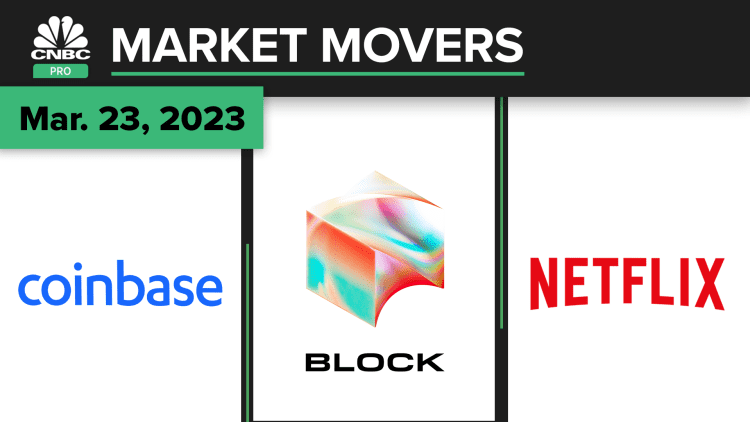
Stocks ended higher on Thursday in what was a turbulent trading session as traders bet that the Federal Reserve may be nearing the end of its rate hiking cycle.
The S&P 500 closed 0.29% higher, while the tech-heavy Nasdaq Composite climbed 1%. The Dow Jones Industrial Average rose 73.66 points, or 0.23%, after climbing up as much as 481.38 points. The broader market index and the Nasdaq gained as much as 1.8% and 2.5%, respectively, before easing from those levels.
Technology stocks outperformed as investors reduced their Fed hike bets and Treasury yields declined, with the SPDR Technology Select Sector (XLK) gaining 1.63%. Microsoft, Nvidia and Apple all advanced. Tech was the hardest hit part of the market as the Federal Reserve raised rates nine straight times in about a year. The turn lower in rates this month is causing investors to rotate back into tech shares.
Meanwhile, regional stocks fell broadly, with the SPDR S&P Regional Banking ETF (KRE) losing 2.78%. To be sure, the fund regained some losses after Treasury Secretary Janet Yellen said the administration is ready to take "additional actions if warranted" to stabilize the U.S. banking system.
The Fed hiked rates by 25 basis points Wednesday, as expected. It also hinted that its inflation-fighting tightening campaign could be nearing the end, with the removal of the phrase "ongoing increases" from its statement.
The Fed's decision and subsequent comments by Chair Jerome Powell at the conclusion of the policymakers' two-day meeting on Wednesday weighed on stocks. While Powell said that "rate cuts are not in our base case" for the remainder of 2023, traders priced in expectations of the central bank lowering rates this year.
"Even if the banking woes have been contained and the deposit flight is over, I don't think they'll prove to be the only set of headlines that pose risks to the economy," wrote Liz Young, head of investment strategy at SoFi. "What might be more likely in coming months is some sort of credit problem as companies' debt matures and they need to refinance their operations at much higher rates than before."
Young continued, "For a long time in this cycle, credit spreads had barely moved. There was virtually no fear in the investment grade or high-yield space … until recently. These were obviously affected by the bank headlines, but if we use markets as forward-looking mechanisms, the increase in spreads portrays bumps ahead."



